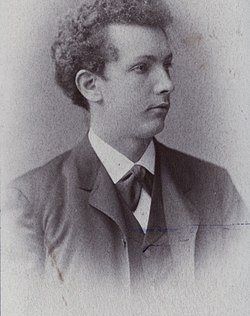Structure
Like all of his chamber music, Strauss' sonata follows standard classical form, though it is considered the last of his works to do so. [3] The piece is in three movements, and takes approximately thirty minutes to perform:
- Allegro, ma non troppo
- Improvisation: Andante cantabile
- Finale: Andante - Allegro
The first movement opens with a brief piano solo, followed by lyrical violin interludes, through which the thematic material is presented. This movement follows typical sonata-allegro form, and although it begins in a melancholy tone, the movement ends jubilantly.
The second movement is unique in that it is an Improvisation; that is, the tranquil violin passages give the impression of improvisational material. This movement maintains a beautiful singing tone throughout, and ends meditatively. It is in ternary form.
The third and final movement begins with a slow, meditative piano introduction which then leads into an exuberant Allegro. After a rush of virtuosic passages from both performers, the sonata comes to an explosive end.
This page is based on this
Wikipedia article Text is available under the
CC BY-SA 4.0 license; additional terms may apply.
Images, videos and audio are available under their respective licenses.
